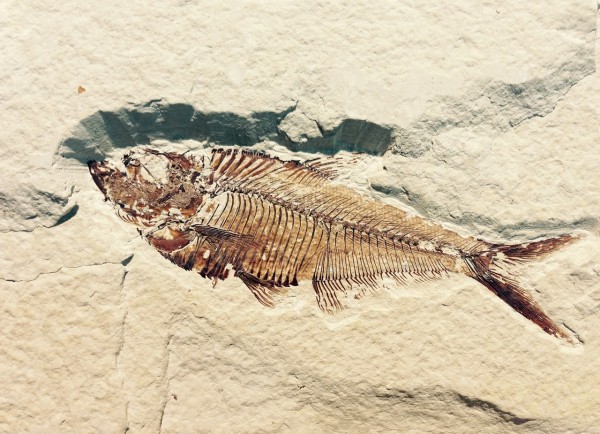The first early animal bones began to develop 540 million years ago before the diversity of life on Earth blossomed.
However, there aren’t many additional early skeletons left in the fossil record, and most of them have long since lost their soft portions.
Because of this, it is difficult to describe the earliest skeleton organisms on Earth outside of hollow tubes and even more difficult to categorize them.
Science Alert said archaeologists are now getting a close-up look at the early lifeforms around 514 million years ago thanks to a few fortunate fossils from China that beat the odds.
 (Photo : Image by photosforyou from Pixabay )Scientists have found a link between fossilized fish and modern technological machinery.Fossils From Cambrian Explosion
(Photo : Image by photosforyou from Pixabay )Scientists have found a link between fossilized fish and modern technological machinery.Fossils From Cambrian Explosion
The Cambrian Explosion, which occurred between 550 and 520 million years ago (per Britannica), is when the earliest creatures with strong, hard bones first appeared in the fossil record.
Most of these early fossils are simple, hollow tubes ranging from a few millimeters to several centimeters. Since the soft parts required to identify them as belonging to the animals of today were not preserved, it was practically impossible to determine what sort of creatures produced these bones.
However, according to a press statement from the University of Oxford, the recently found collection of 514 million-year-old fossils now contains four specimens of Gangtoucunia aspera that still have complete soft tissues, such as the stomach and mouthparts.
It suggests that this species had a mouth surrounded by smooth, unbranched tentacles 5 millimeters long. According to the findings, they were probably used to sting and grab prey like tiny arthropods.
Additionally, fossils show that Gangtoucunia had a blind-ended gut with an internal chamber barrier that extended the whole length of the tube and was only accessible at one end. Only modern jellyfish, anemones, and their closely related cnidarians, soft-bodied creatures exceedingly rare in the fossil record, exhibit these traits.
The findings show that these early organisms were among the first to produce the hard bones that make up most of the fossil record.
Like contemporary scyphozoan jellyfish polyps, the researchers suggest that Gangtoucunia possessed a stiff tube structure attached to the underground substrate. The mouth of the tentacle would have been visible outside the tube, but it may have been brought in to ward against danger.
In contrast to jellyfish polyps, the tube of Gangtoucunia was constructed of calcium phosphate. This sturdy substance also builds up our teeth and bones. Over time, animals’ utilization of this material to build bones has decreased.
One in a Million Discovery
It is a one-in-million discovery, according to corresponding author Dr. Luke Parry of the Department of Earth Sciences at the University of Oxford (per Technology News).
These enigmatic tubes, according to Parry, are frequently discovered in clusters of hundreds. However, because scientists lacked a classification system, they have been classed as “problematic” fossils up until this point. These remarkable new individuals have helped to solidly anchor a crucial piece of the evolutionary jigsaw.
The new specimens unequivocally show that, contrary to what had previously been hypothesized for analogous fossils, Gangtoucunia was not related to annelid worms (earthworms, polychaetes, and their cousins). It is now evident that annelids have segmented bodies with transverse body partitioning. In contrast, Gangtoucunia had a smooth exterior with a gut divided longitudinally.
The full study is available in Proceedings of the Royal Society B.
Sources:sciencetimes.com








